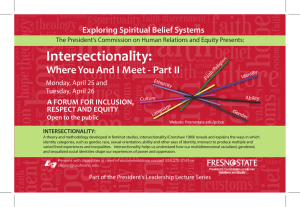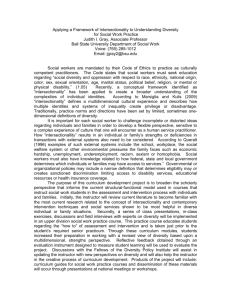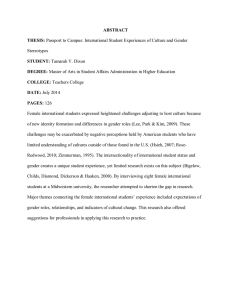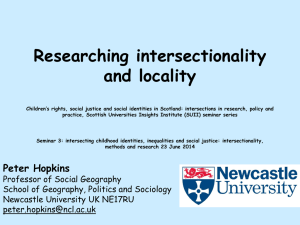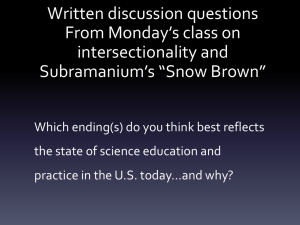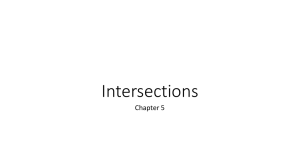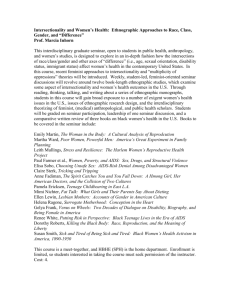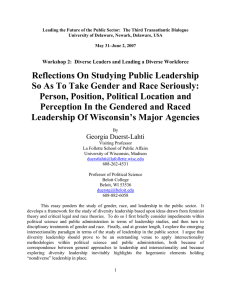Document 13523975
advertisement
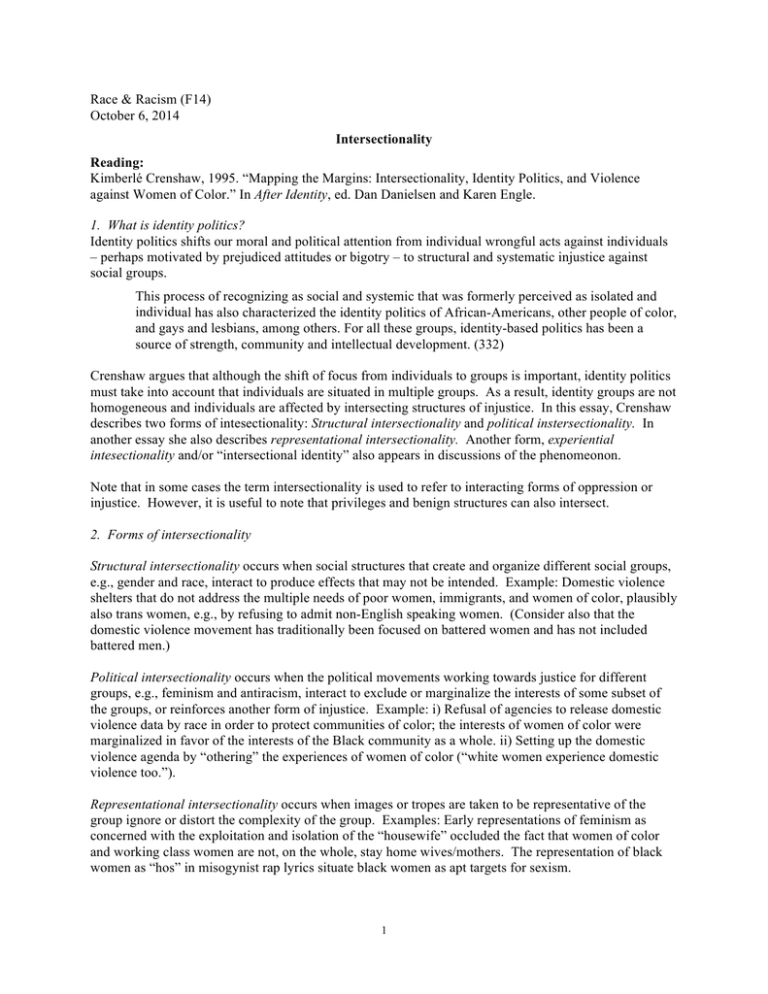
Race & Racism (F14) October 6, 2014 Intersectionality Reading: Kimberlé Crenshaw, 1995. “Mapping the Margins: Intersectionality, Identity Politics, and Violence against Women of Color.” In After Identity, ed. Dan Danielsen and Karen Engle. 1. What is identity politics? Identity politics shifts our moral and political attention from individual wrongful acts against individuals – perhaps motivated by prejudiced attitudes or bigotry – to structural and systematic injustice against social groups. This process of recognizing as social and systemic that was formerly perceived as isolated and individual has also characterized the identity politics of African-Americans, other people of color, and gays and lesbians, among others. For all these groups, identity-based politics has been a source of strength, community and intellectual development. (332) Crenshaw argues that although the shift of focus from individuals to groups is important, identity politics must take into account that individuals are situated in multiple groups. As a result, identity groups are not homogeneous and individuals are affected by intersecting structures of injustice. In this essay, Crenshaw describes two forms of intesectionality: Structural intersectionality and political instersectionality. In another essay she also describes representational intersectionality. Another form, experiential intesectionality and/or “intersectional identity” also appears in discussions of the phenomeonon. Note that in some cases the term intersectionality is used to refer to interacting forms of oppression or injustice. However, it is useful to note that privileges and benign structures can also intersect. 2. Forms of intersectionality Structural intersectionality occurs when social structures that create and organize different social groups, e.g., gender and race, interact to produce effects that may not be intended. Example: Domestic violence shelters that do not address the multiple needs of poor women, immigrants, and women of color, plausibly also trans women, e.g., by refusing to admit non-English speaking women. (Consider also that the domestic violence movement has traditionally been focused on battered women and has not included battered men.) Political intersectionality occurs when the political movements working towards justice for different groups, e.g., feminism and antiracism, interact to exclude or marginalize the interests of some subset of the groups, or reinforces another form of injustice. Example: i) Refusal of agencies to release domestic violence data by race in order to protect communities of color; the interests of women of color were marginalized in favor of the interests of the Black community as a whole. ii) Setting up the domestic violence agenda by “othering” the experiences of women of color (“white women experience domestic violence too.”). Representational intersectionality occurs when images or tropes are taken to be representative of the group ignore or distort the complexity of the group. Examples: Early representations of feminism as concerned with the exploitation and isolation of the “housewife” occluded the fact that women of color and working class women are not, on the whole, stay home wives/mothers. The representation of black women as “hos” in misogynist rap lyrics situate black women as apt targets for sexism. 1 Experiential intersectionality is the experience of being a member of more than one social group that cannot be decomposed into the experience of being a member of each. Example: The experience of being a Black woman is not just the experience of being Black and the experience of being a woman. The experience of being a Black woman is a proper compound of the two. (Assuming a contrast between mixtures and compounds. Roughly: Mixtures are like fruit salads. Compounds are like smoothies?) Intersectional identity: The identification with an intersectional group. Example: the identification as an Asian woman, or a Lesbian, or a disabled Latino. 3. Questions: i) What is the value of understanding intersectionality for social justice politics? Can you give examples of how an intersectional analysis (structural, political, representational) improves our understanding of a phenomenon other than domestic violence? ii) Does the phenomenon of experiential intersectionality prevent us from theorizing meaningfully about race apart from gender or other social categories? iii) One harm of ignoring intersectionality is that we fail to see the heterogeneity of the social group. Are there other harms or mistakes that result? iv) What might a critique of an intersectional approach look like? iv) What is the value of understanding intersectionality for the study of race? What lessons should we learn from this essay? v) Are there other sites/forms of intersectionality (other than structural, political, representational, experienctial, identity) not yet covered? Crenshaw, Kimberlé. “Mapping the Margins: Intersectionality, Identity Politics, and Violence against Women of Color.” Chapter 17 in After Identity: A Reader in Law and Culture. Edited by Dan Danielsen and Karen Engle. Routledge, 1995. © Routledge. All rights reserved. This content is excluded from our Creative Commons license. For more information, see http://ocw.mit.edu/help/faq-fair-use/. 2 MIT OpenCourseWare http://ocw.mit.edu 24.236 / 24.636 Topics in Social Theory and Practice: Race and Racism Fall 2014 For information about citing these materials or our Terms of Use, visit: http://ocw.mit.edu/terms.
